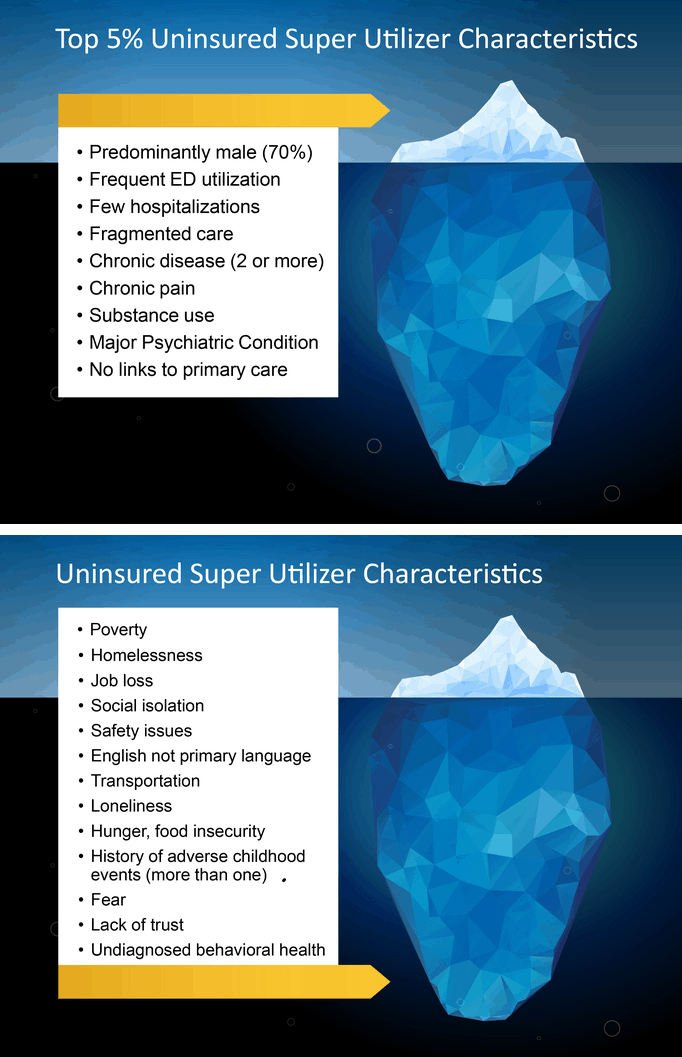
Susan Cooper gives a 12 month report to community partners at a ONE Health update meeting at Neighborhood Christian Center
Every Memphian deserves great health care regardless of insurance coverage, age or housing situation. That’s part of the focus of ONE Health, an effort at Regional One Health to use compassionate care and exceptional services to keep the city’s most vulnerable residents healthier. ONE Health launched in summer 2017 as an effort to reduce the human and financial costs among Regional One Health’s highest of high utilizers, known as super utilizers.
The traditional population health model is built around people with some type of insurance coverage. It’s often disease specific. Individuals and organizations are in place to address those people. ONE Health addresses another group, the super utilizers. Those individuals access various health care providers in the Memphis area, not just Regional One Health.
For the first eight months of ONE Health, the focus was on building the foundation in partnership with Camden Coalition. That meant analyzing patient data, specifically uninsured patients. So any patient who visited one of Regional One Health’s Centers of Excellence over the previous two years wasn’t included.
Of the 34,499 patients who utilized the Jefferson Emergency Department costing $111.7 million over the two years, the top 5 percent of those cost $62.6 million of the total. The top 25 patients cost $6.3 million. Those top patients are known as super utilizers, people who are medically and socially complex, usually have four or more hospital stays or 10 or more emergency department visits over a two-year period.
“If you think about Regional One Health, what’s unique for us is we’re both payer and provider. We’ll never get away from our mission of providing care to every person who walks through that door, but we can do it in a better way,” said Regional One Health Senior Vice President/Chief Integration Officer Susan Cooper, MSN, RN, FAAN, at a recent first-year progress update of ONE Health. “What if we spent that money differently? What if we could invest in services that matter the most?”
Every person is unique, but there are general characteristics of the top 5 percent of uninsured super utilizers. Seventy percent are male. They frequently use the emergency department but have few hospitalizations. They have two or more chronic diseases and often suffer with chronic pain, typically have major psychiatric conditions such as Schizophrenia or bipolar disorder, are depressed, have no links to primary care and often have fragmented care.
 Those are the visual characteristics, but what’s not seen is important, too. ONE Health viewed 104 records to identify root causes. Those include poverty, homelessness, social isolation, fear, inability to speak English, transportation, loneliness, food insecurity and hunger, occurrence of childhood adverse events, lack of trust and undiagnosed behavioral health issue.
Those are the visual characteristics, but what’s not seen is important, too. ONE Health viewed 104 records to identify root causes. Those include poverty, homelessness, social isolation, fear, inability to speak English, transportation, loneliness, food insecurity and hunger, occurrence of childhood adverse events, lack of trust and undiagnosed behavioral health issue.
The ONE Health team decided to analyze one hot and humid summer day in 2017 to better understand the unique needs of some Regional One Health patients.
“We had patients on top of each other in the emergency department. We started looking to see where they came from and an abundance of patients came from a homeless mission down the street,” Cooper said. “They had to leave in the morning and can’t go back until that night. The closest place to go is a park and it’s just as hot there as everywhere else. So a number of our patients looked for the closest place with lights on and doors open. They came because there was a bed, food and water.”
And as those individuals fill beds, they take spots away from people who come in dealing with serious emergencies.
But then there are ways to help super-utilizing individuals dealing with serious emergencies ultimately use hospital services less with appropriate services. Cooper mentioned one patient who because of illness lost his job and ultimately his home. Ultimately, he lived in his car but didn’t have money to buy gas to turn on the heater.
He ended up in and out of the emergency department and ultimately had part of his leg amputated. He connected with ONE Health and had housing and wraparound social services arranged.
“For us, what was important for him was to take care of his infection. But for him the most important thing was to find a place to stay,” Cooper said. “Once he has housing in place he then can execute what we as a health system thinks is important for him.”
ONE Health works by listening to the patient to better understand what’s most important to him or her, whether that’s housing, medication or safety.
Long-term expectations are broken down into three buckets: utilization, economics and quality measures. Hospital admissions and emergency visits for super utilizers will decrease while outpatient and clinic visits will increase. If a person is admitted to the hospital, the length of stay will be shorter.
The operating margins will improve as more individuals qualify for insurance coverage, meaning money back to the system. Quality measures include disease specific outcomes, patient housing stability, primary care utilization, patient satisfaction and trust.
“This is about improving the health of this community,” Cooper said. “Our job is to set a longer table for more voices. Great things are happening at Regional One Health with collaboration of all of our partners. We don’t care what door someone goes through as long as they get through a door.”